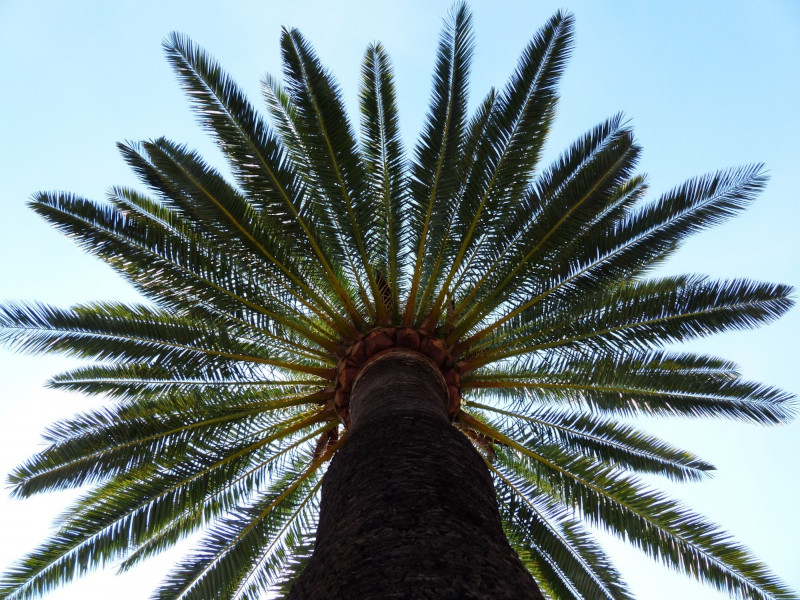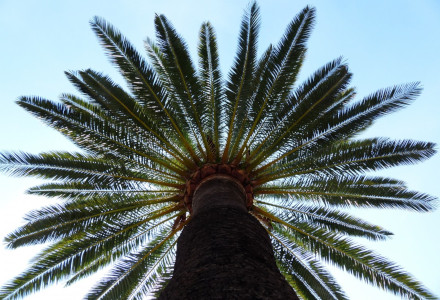
Public Domain Image
Cretan Date Palm Facts
- The Cretan Date Palm constitutes a rather interesting and unique plant species. This palm also, unfortunately, possesses an extremely restricted habitation range.
- The tree was first categorized by the Swiss botanist, Werner Greuter, in 1967. He also assigned it the scientific name of Phoenix theophrasti. It was named in honor of Theophrastus, the Greek considered the father of botany.
- Unlike related species, the fruit of the Cretan Date Palm does not form a commercially viable product.
- Of some interest remains the fact that the local populations of this species comprise the only palm forests in Europe.
Related Species
Scythian Lamb Cycad Phoenix Plant
Cretan Date Palm Physical Description
Visually, the Cretan Date Palm seems rather similar to related species, with one notable exception. It also attains a maximum height of approximately 49.2 ft (15 m).
The leaves grow rather long and slender. These may be as much as 9.8 ft (3 m) in length. The stems develop lined with long yellow spikes, and begin as dark green in color. However, as these mature, they turn a most unusual silvery blue-green in color.
The fruit also grows into an oval-shaped drupe, yellowish-brown in color. Its fruit can be called edible, but it tastes acrid and generally unpalatable.
The tree has a dioecious nature, and the exact manner of pollination remains unknown. Its flowers bloom in masses and typically show a cream color.
- Kingdom: Plantae
- Phylum: Angiosperms
- Class: Monocots
- Order: Arecales
- Family: Arecaceae
- Genus: Phoenix
- Species: P. theophrasti
Cretan Date Palm Distribution and Habitat
Most notably, the Cretan Date Palm developed endemically in the eastern Mediterranean region. Even within that range, its populations remain highly restricted. It appears only in extreme southern Greece, a few locations on islands such as Crete, and four known locations on the coast of Turkey, in Asia.
This makes the species one of only two species of palm endemic to Europe. It remains unknown whether or not they once existed in a more widespread area. However, most botanists understandably believe that they once did indeed inhabit a larger range.
Individuals typically grow in regions of poorer soils, surrounded by sparse vegetation. Given its endemic range, it adapted to hot, dry summers and cool, wet winters.
Species Sharing Its Range
Blanket Octopus Mediterranean Monk Seal Naked Man Orchid
Check out our other articles on 6 Mysterious Natural Phenomena, Bandicoot, McMurdo Dry Valleys, Vietnamese Mossy Frog, European Honey Buzzard, Ohlone Tiger Beetle

